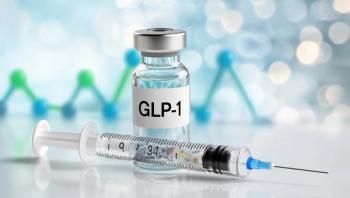
Can A1C Be Used to Predict Type 2 Diabetes in Children and Adolescents?
An increasing prevalence of type 2 diabetes and poor glycemic control among youth in the United States has highlighted the need for early detection of prediabetes.
An increasing prevalence of type 2 diabetes and poor glycemic control among youth in the United States has highlighted the need for early detection of prediabetes. Researchers from the National Institute of Diabetes and Digestive Kidney Diseases at the National Institutes of Health
Based on adult studies, using A1C as a diagnostic test for diabetes is already recommended by the American Diabetes Association (ADA), which publishes Diabetes Care. The researchers studied A1C along with fasting plasma glucose (FPG) and 2-h postload plasma glucose (2hPG) in a study of American Indian children, adolescents, and adults to assess how these measurements predict the development of diabetes.
“Few large longitudinal studies have assessed the predictive value of [A1C] measured in childhood and adolescence in predicting incident diabetes,” the authors wrote.
They conducted a longitudinal study from 1965 to 2007. A total of 2095 children and adolescents who were between the ages of 10 and 19 at their first examination without diabetes and who had at least 1 follow-up examination before age 40 were included in the study. An additional 2005 adults, who had been between the ages of 20 and 39 when the first examination determined they did not have diabetes and who had a follow-up examination before age 60, were also included. Diabetes was defined at baseline and follow-up by the current ADA criteria, and prediabetes was defined as A1C levels between 5.7% and 6.4%, FPG between 100 and 125 mg/dL, or 2hPG between 140 and 199 mg/dL.
At baseline, more than half (53.1%) of the children and adolescents were categorized as obese, 18.8% were overweight, and 28.1% were normal weight. Among adults, 73.8% were obese, 19.1% were overweight, and 7.1% were normal weight. Prediabetes was prevalent in 3% of the pediatric population and 8.4% of the adult population.
“In the current study, [A1C] was a useful predictor of future diabetes in all age and sex categories, performing as well as or better than other measures of glycemia,” with the exception of adult women, the authors wrote.
The researchers found that male children and adolescents who had prediabetes at baseline had a 4-fold higher incidence of diabetes, while females had a 7-fold higher incidence of diabetes during follow-up compared with counterparts in the lowest A1C category (≤5.3%). Rates of diabetes incidence among adults were higher, the rate ratios comparing the highest A1C category (5.7% to 6.4%) to the lowest were the same or higher in children.
“We therefore conclude that [A1C] can be used to assess risk for diabetes in children or to identify children with prediabetes with the same confidence as FPG or 2hPG,” the authors concluded.
Newsletter
Stay ahead of policy, cost, and value—subscribe to AJMC for expert insights at the intersection of clinical care and health economics.















































